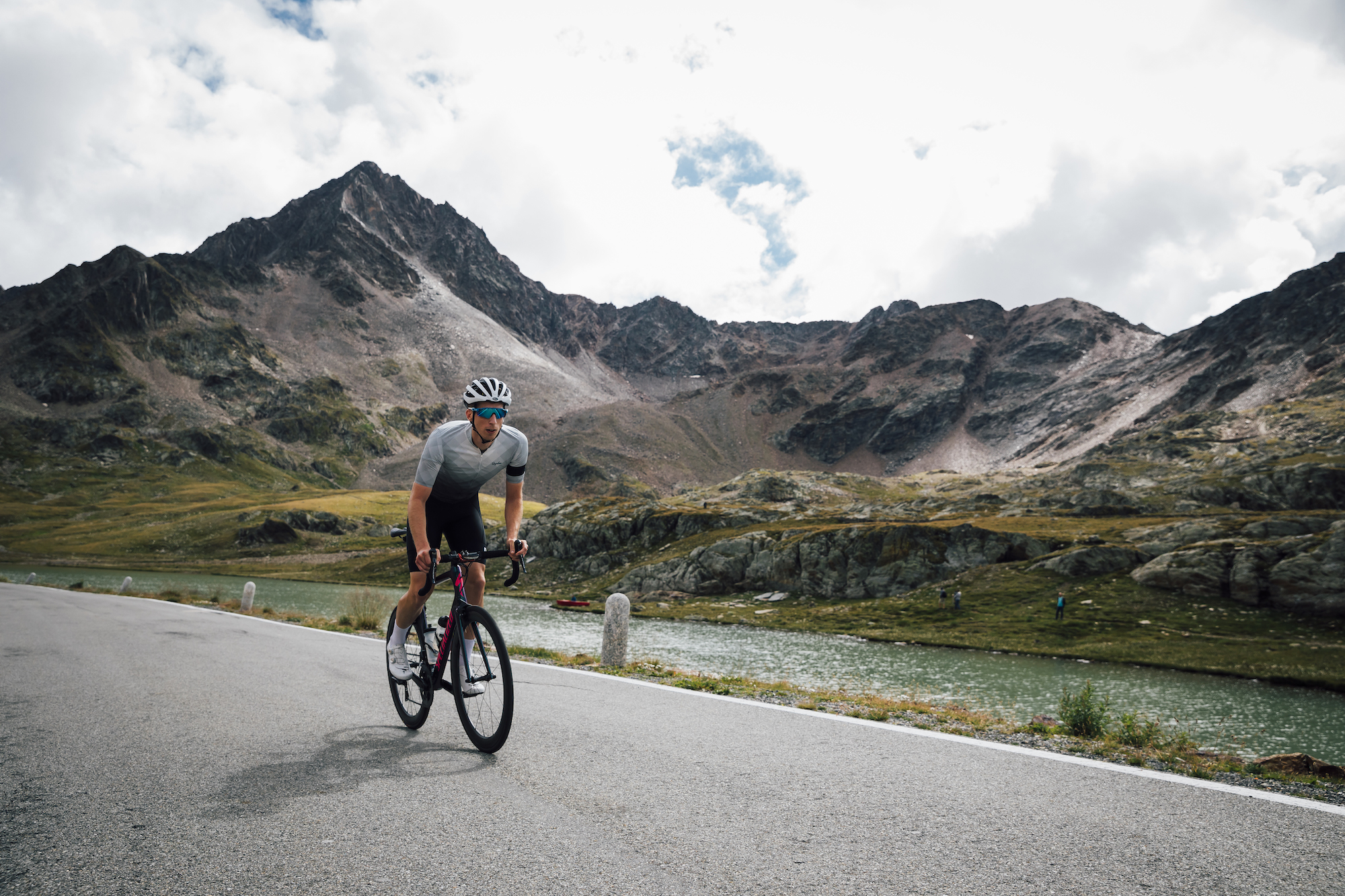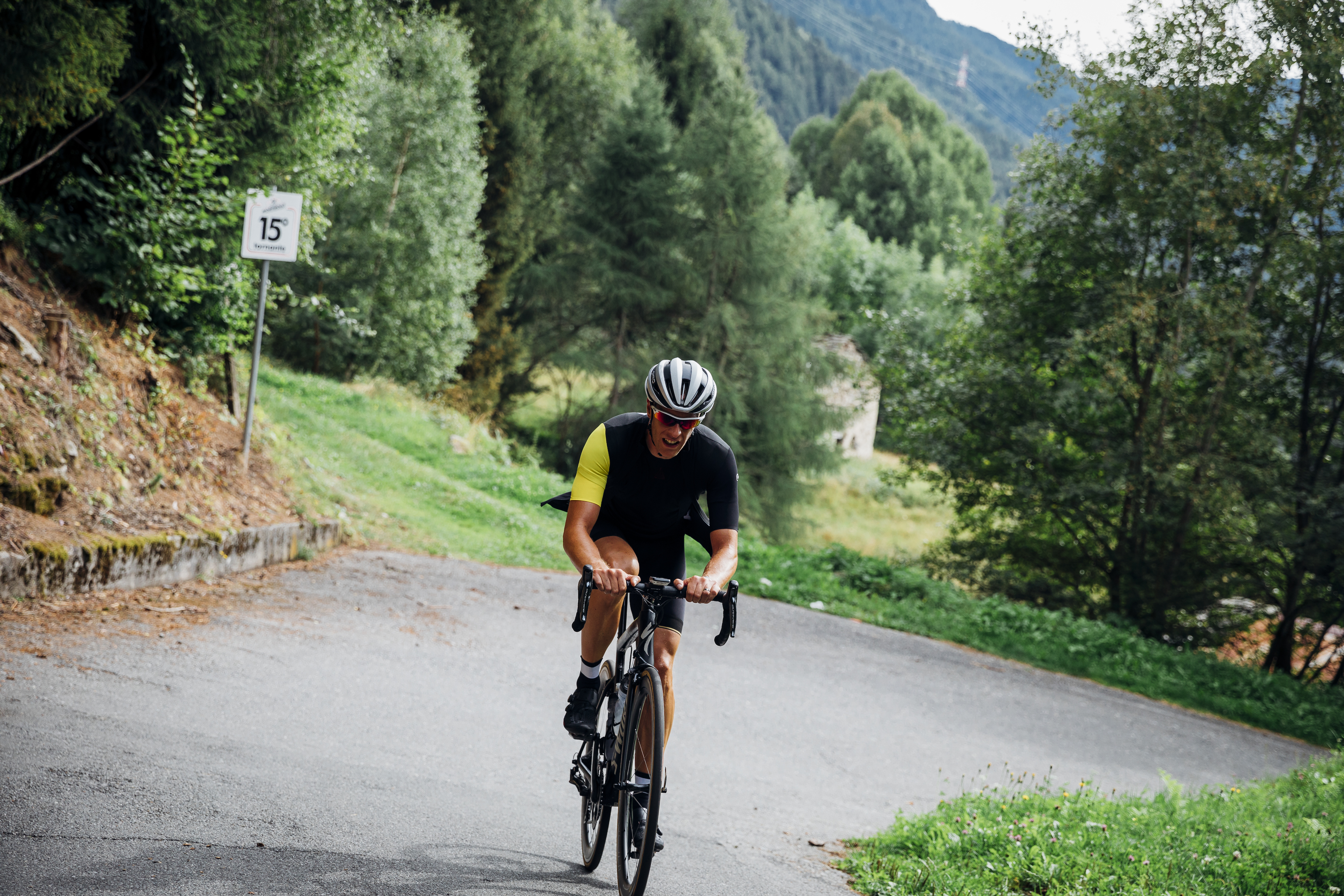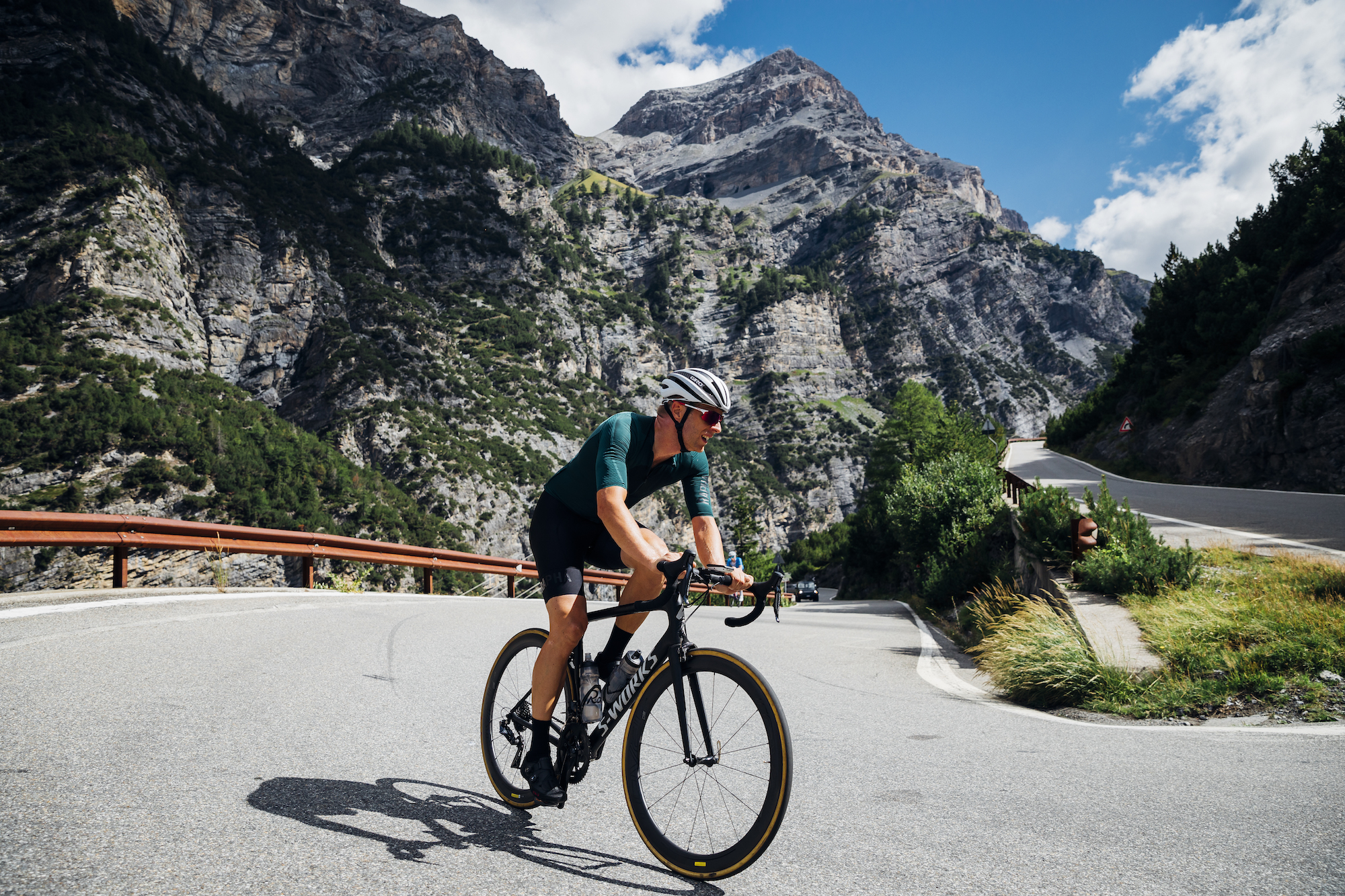How to master riding long climbs
You won't find as many long climbs in the UK as you will on the Continent, but when you hit one you want to be in a position to conquer it. Use these technique, kit and nutrition tips to master long climbs - Words by Marc Abbott

Sportives, whether UK or Continental, frequently feature long, tough climbs such as Bwlch-y-Groes on the Dragon Ride or an epic like Col du Galibier in the Marmotte. Often, the ride doesn’t stop at the summit so you need to make it to the top with legs to spare.
Mike Cotty, global ambassador for Cannondale and Mavic is a mountain and endurance cycling specialist. Having completed a 1,000km non-stop journey across the Dolomites, Eastern Alps and Swiss Alps in 2014, he knows a few things about how to reach the summit with a smile on your face.

As with most things, correct technique is crucial. “On longer ascents try staying in the saddle to get into a rhythm while pedalling at a higher cadence, around 90rpm”, Cotty says. “This will help keep your legs supple and use your aerobic capacity more efficiently as opposed to relying on leg strength alone.”
>>> How to ride faster up short, steep hills
But what happens when the road rises more steeply? Cotty explains: “When the gradient increases, especially on hairpins, shift your weight forward and stand on the pedals to put more power down. Alternating between a seated and standing position can help spread the load across your body.”
Crucial to your summiting is not giving everything on the lower slopes, and then blowing near the top. Cotty explains the basics of pacing: “It’s essential to find a pace that’s sustainable and within your limits. Make sure you have a low enough gear. A 34-tooth small chainring and up to a 32-tooth sprocket on the rear cassette may seem excessive but on a long climb you’ll be glad of it.”
Essential points
Get The Leadout Newsletter
The latest race content, interviews, features, reviews and expert buying guides, direct to your inbox!
- Pace yourself
- Keep your legs spinning
- Stay seated on constant gradients
- Prepare for changes in temperature
Something people often don’t consider is the change in body temperature on a long climb, and the subsequent need for suitable clothing for the descent. “Also weather conditions can change very quickly”, says Cotty. “Gloves, leg warmers and a lightweight packable shell are essential items, especially for the descent when the wind chill will really bite.”
Finally, fuelling properly is a key to success as long climbs and long rides often go hand in hand. Cotty continues: “Little and often is the key. Stay hydrated by sipping on your water bottle and keep the calories coming in. 60g of carbs per hour should keep your legs turning, but we’re all different, so it’s best to experiment in advance to see what works best for you.”

Top tips for mastering climbs
- Try to stay in the saddle and meter your effort — this is especially important on long climbs of constant gradient, and will help you to get into a rhythm and use your aerobic capacity to the fullest.
- Set aside a few pockets for warm clothing. Although the effort involved in pushing for the summit might help to keep you warm, your body temperature will drop as you start descending.
- Although the key to progress is a constant, seated, high-cadence effort, there’s a time and a place for getting out of the saddle — like hairpins. The gradient is usually steeper as the road twists; head for the outside of the corner, where it’s normally a shallower gradient.
- A 53/39 chainset is great for smashing a Sunday ride in easy terrain, but there’s no shame in fitting a semi-compact 52/36 or compact 50/34 chainset for longer rides and steeper climbs. When riding several climbs in a long ride it can ease the pressure.
- You’ll inevitably experience muscle fatigue if you ride in the same position for any length of time. A few pedal strokes stood up or shifting forward or backwards on the saddle can help ease this.
- The key to maintaining your energy levels to tackle the tough climbs is to eat and drink little and often throughout the ride. Aim for around 60g of carbs each hour.

Thank you for reading 20 articles this month* Join now for unlimited access
Enjoy your first month for just £1 / $1 / €1
*Read 5 free articles per month without a subscription

Join now for unlimited access
Try first month for just £1 / $1 / €1
Founded in 1891, Cycling Weekly and its team of expert journalists brings cyclists in-depth reviews, extensive coverage of both professional and domestic racing, as well as fitness advice and 'brew a cuppa and put your feet up' features. Cycling Weekly serves its audience across a range of platforms, from good old-fashioned print to online journalism, and video.
-
 'I'll take a top 10, that's alright in the end' - Fred Wright finishes best of British at Paris-Roubaix
'I'll take a top 10, that's alright in the end' - Fred Wright finishes best of British at Paris-RoubaixBahrain-Victorious rider came back from a mechanical on the Arenberg to place ninth
By Adam Becket Published
-
 'This is the furthest ride I've actually ever done' - Matthew Brennan lights up Paris-Roubaix at 19 years old
'This is the furthest ride I've actually ever done' - Matthew Brennan lights up Paris-Roubaix at 19 years oldThe day's youngest rider reflects on 'killer' Monument debut
By Tom Davidson Published